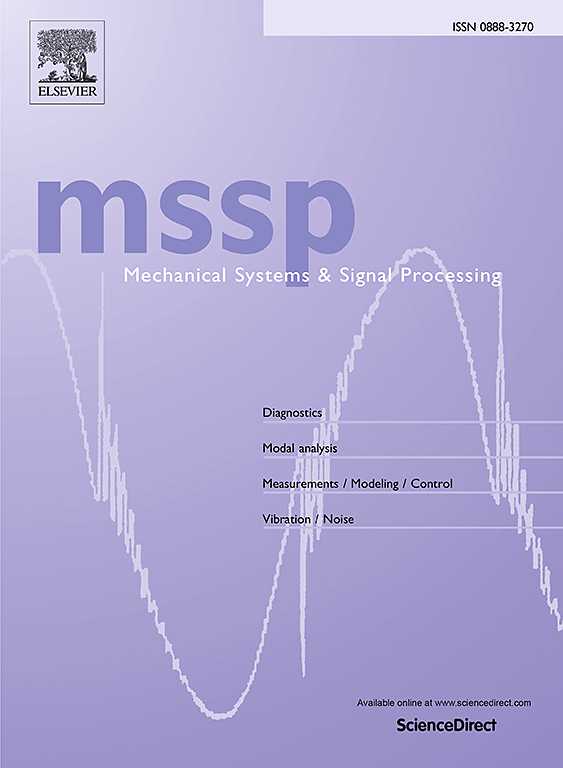Baseline-free damage imaging of CFRP lap joints using K-means clustering of guided wave signals
IF 7.9
1区 工程技术
Q1 ENGINEERING, MECHANICAL
引用次数: 0
Abstract
Ultrasonic Guided Waves (UGWs) have received significant attention for structural health monitoring (SHM) applications in various structures. However, their application in adhesively bonded Carbon Fiber Reinforced Polymer (CFRP) joints faces considerable challenges due to the high anisotropy of CFRP, complex guided wave behavior, and multiple mode conversions. As a result, baseline-free damage imaging using conventional algorithms experiences significant difficulties. This paper proposes a baseline-free damage imaging methodology for SHM applications, introducing a novel damage index calculation formula. The methodology is a modified Reconstruction Algorithm for Probabilistic Inspection of Defects (RAPID) that incorporates an innovative damage index formula based on K-means clustering. This unsupervised approach assigns scores by identifying patterns or anomalies in the data through clustering similar behaviors. Additionally, scaling factors for different transmitter–receiver pairs are modified, considering the first Fresnel zone to enhance accuracy. In this work, multiple features are extracted from the recorded signals across various domains and ranked based on their locality-preserving ability. The top-ranked features are then utilized in K-means clustering to calculate the damage index score. The study employs parallel arrays of piezoelectric transducers on both sides of an anisotropic CFRP adhesive joint with two different sizes of artificial disbonds. The performance of the proposed approach is validated through both numerical simulations and experimental methods. Finally, a comprehensive analysis is conducted to assess the significance of each variable on the overall accuracy of damage imaging and localization.
求助全文
约1分钟内获得全文
求助全文
来源期刊

Mechanical Systems and Signal Processing
工程技术-工程:机械
CiteScore
14.80
自引率
13.10%
发文量
1183
审稿时长
5.4 months
期刊介绍:
Journal Name: Mechanical Systems and Signal Processing (MSSP)
Interdisciplinary Focus:
Mechanical, Aerospace, and Civil Engineering
Purpose:Reporting scientific advancements of the highest quality
Arising from new techniques in sensing, instrumentation, signal processing, modelling, and control of dynamic systems
 求助内容:
求助内容: 应助结果提醒方式:
应助结果提醒方式:


